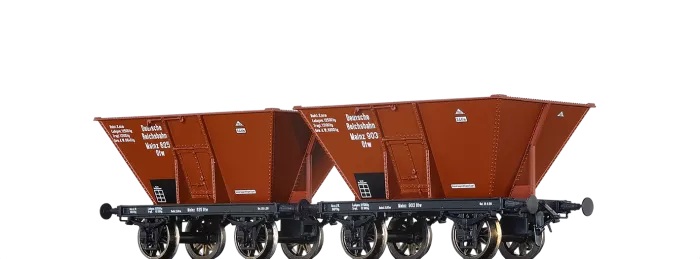
Coal Cars K.P.E.V., set of 2
Road no.: Saarbrücken 57 281 / 57 784
Model details
- Multipart, filigree axle bearings
- Body in die-cast zinc
- Fine paintwork and printing
- Separately mounted coach body supports
- Fine metal spoked wheels
Downloads
Info about the original
With the onset of the industrial revolution, more and more steel works are built in the Saarland. The anthracite deposits and the iron ore mined nearby in Lorraine made production appear attractive in many areas. Especially to supply these mills and steel works, the Prussian State Railway bought special coal hopper cars from 1883 onwards. On an undercarriage with a 2,800 mm axle base sat a funnel-shaped structure, which could be unloaded very quickly both via a flap on the left and right and through floor flaps over a deep bunker. With a freight capacity of 13.2 m3 , the cars had a payload of 10 t. As the construction type proved itself in its special area of application, the design was revised and from 1897 onwards a reinforced type was purchased. The cars built according to design IIc12 had a larger hold with a capacity of 15.3 m3 and could now handle a payload of 12.5 t. Up to 1905, 230 of these larger cars were built. As with the predecessor type, there were only unbraked cars and cars with a handbrake. The Deutsche Reichsbahn took over all cars and classified them as Otr(u) in the „Mainz“ class district and continued to use them exclusively in the Saarland. Today, little is to be found of this industrial marvel. One producing steel works on the Saar is today to be found in Dillingen. The Völklinger steel mill was completely preserved after it was shut down and today is one of the UNESCO world heritage sites as a unique museum. In addition to cultural events of all types, impressive information can be obtained on steel production and its history. The exhibits also include several railway vehicles of various epochs, which are shown in their historic environment.








